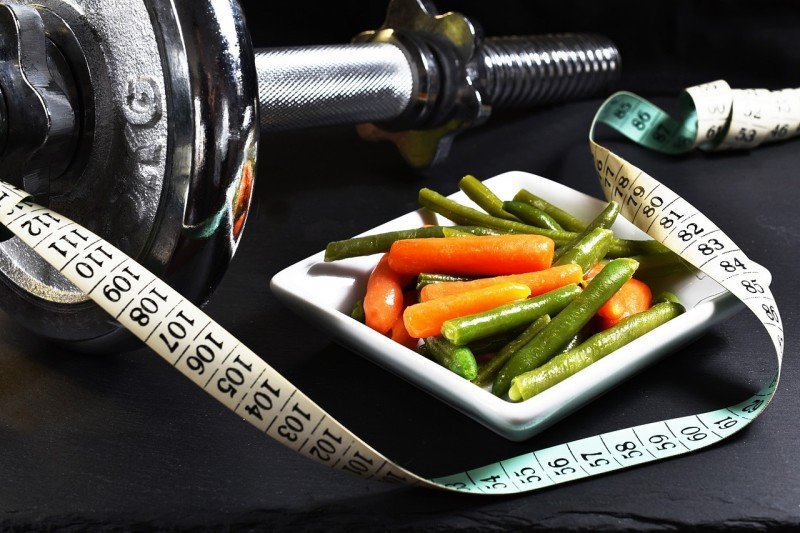Struggling to shed pounds? Atkins Essentials for Diet and Fitness is your key to success! This program offers a structured, low-carb approach with meal plans, recipes, and expert advice. Reach your weight loss goals and feel energized with Atkins Essentials for Diet and Fitness.

Unveiling the Atkins Diet: A Beginner's Guide
The Atkins diet is not a new phenomenon. The diet first appeared in the late 1970s and has grown popularity in recent years in response to the low-fat diet craze. As dieters had trouble with low-fat plans, they searched for a new solution and Dr. Atkins’ New Diet Revolution book found a new audience.
A lot of people have jumped on the Atkins bandwagon and there has been a lot of hype as a result. But what are the basic principles of the Atkins diet?
The Atkins diet is based on a theory of why we get fat. According to Dr. Atkins, the over-consumption of carbohydrates and simple sugars leads to weight gain. The way your body processes the carbohydrates you eat have more to do with your waistline than the amount of fat or calories that you consume. In his book, Atkins outlines a phenomenon called “insulin resistance.” He theorizes that many overweight people have cells that do not work correctly.
When you eat excess carbohydrates and sugar, your body notices that sugar levels are elevated. Insulin is released from the pancreas in order to store sugar as glycogen in the liver and muscle cells for extra energy later on. However, your body can only store so much glycogen at once. As soon as your body reaches its limit for glycogen storage, the excess carbohydrates are stored as fat. This happens to everyone who eats too many carbohydrates.
However, insulin resistant individuals have an even harder time of using and storing excess carbohydrates. The more insulin that your body is exposed to, the more resistant it becomes. Overtime, the pancreas releases more insulin and cells become insulin resistant. The cells are trying to protect themselves from the toxic effects of high insulin. They create less glycogen and more fat.
As a result, insulin resistant individuals gain extra weight. The carbohydrates get converted into fat instead of energy. Other side effects include fatigue, brain “fog” (the inability to focus, poor memory, loss of creativity), low blood sugar (which can leads to hypoglycemia), intestinal bloating, sleepiness, depression and increased blood sugar. There is much more than weight at stake when you are insulin resistant.
The remedy for people who are insulin resistant is a diet restricted in carbohydrates. The crux of the Atkins diet is a limitation of carbohydrates in all of its forms. The foods restricted on the Atkins plan include simple sugars (like cookies, sodas and sweets) and complex carbohydrates (like bread, rice and grains). Even carbohydrates that are considered healthy, such as oatmeal, brown rice and whole wheat bread, are restricted on the program.
The diet has you restrict your carbohydrate intake to less than 40 grams a day. This will put your body in a state of ketosis. While in ketosis, your body will burn fat as fuel. According to Dr. Atkins’ research, the ketosis state will also affect insulin production and it will prevent more fat from being formed. Your body will begin using your stored fat as an efficient form of fuel, and you’ll lose weight.
Another benefit of the Atkins plan is that ketosis will end your cravings for carbohydrates. If you’ve been living on a carb-heavy diet, you may have found that you simply cannot get enough carbohydrates. With carbohydrate restriction and ketosis comes a reduction in carbohydrate cravings. People who have been on the Atkins diet for some time report that they do not crave carbohydrates as they once did.
Although the initial phases of the Atkins diet are rather strict, the program teaches you to restore balance to your diet in the long run. People who use the diet slowly reintroduce minimal amounts of carbohydrate into their eating until they find a comfortable balance between their health and carbohydrate use.
The basic principles of the Atkins diet have been adapted to many other low-carb diet plans. However, Atkins popularity still remains strong as one of the most effective low-carbohydrate solutions for those who are insulin resistant.

Boost Your Energy Levels for Workouts with Atkins Approach
There is a lot of attention paid in the Atkins diet plan towards food and cooking. It’s true that your food choices on the diet are of utmost importance. But a lot of people make the mistake of ignoring exercise. The newly released Atkins food pyramid shows the importance of exercise. It shows an increase in food options with increased activity. Exercise is important on the Atkins diet, and important for everyone’s overall health.
Exercise is beneficial to body, mind and soul. It has many major benefits, even at limited levels. It not only burns fat but it boosts your metabolism and increases circulation. Daily exercise helps your body eliminate toxins through sweat glands and lymph systems. It is especially important to all low-carb weight loss programs because it regulates blood sugar levels.
Physical exercise is essential for Atkins diet success. Without exercise, your body isn’t configured to process carbohydrates successfully. Research has shown that sedentary individuals have extreme insulin reactions to even moderate amounts of carbohydrates. This means that exercise doesn’t only help you lose weight, it will help you keep it off too. Exercise will teach your body how to process the carbohydrates in your diet. When you exercise regularly, you’ll be able to eat more carbohydrates over time because your body will use them efficiently.
There are two basic types of exercise: aerobic exercise and anaerobic exercise. The best regimen combines these two forms each week.
Aerobic exercise’s primary goal is to increase your heart rate. This causes your body to consume more oxygen and it gives all of your cells a fresh supply of oxygen. If you’ve been without physical activity for a while, many of those cells have been deprived. Aerobic exercise will regenerate them and help you feel better in times when you aren’t exercising.
If you’ve been inactive for a while, it may take some time to get used to your new aerobic workouts. You may want to get some advice from your primary care doctor or a professional aerobics instructor. Make sure to start slowly to give yourself time to adjust to your new movements. It’s essential that you learn how to stretch and warm up correctly in order to avoid muscle strain. Some good beginning aerobic activities include walking, golf, tennis and dancing. These activities won’t cause a lot of strain on your body, but they will get your heart moving. Start slowly and set small goals for yourself. For example, if you are starting a walking program begin by walking four blocks. Then increase your training to five blocks, then six. Your body will respond well to the exercise…after all your body was meant to move!
Anaerobic exercise includes any activity that isn’t technically aerobic. Most of the exercises in this category build muscle mass. Weightlifting and strength training are examples of anaerobic exercises. Working out with weights is an important part of losing weight. As you lose fat, you’ll need to replace it with muscle in order to stay lean. Don’t be afraid of working out with weights. You won’t need to become a bodybuilder. Weight bearing exercises like isometrics and resistance training will help improve your bone density, your posture and your fat burning potential.
If an exercise program is not part of your weight loss efforts, you are setting yourself up for failure. Make a commitment to incorporating exercise into your weight loss efforts and you’ll see the results immediately.



